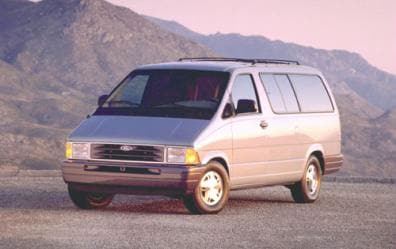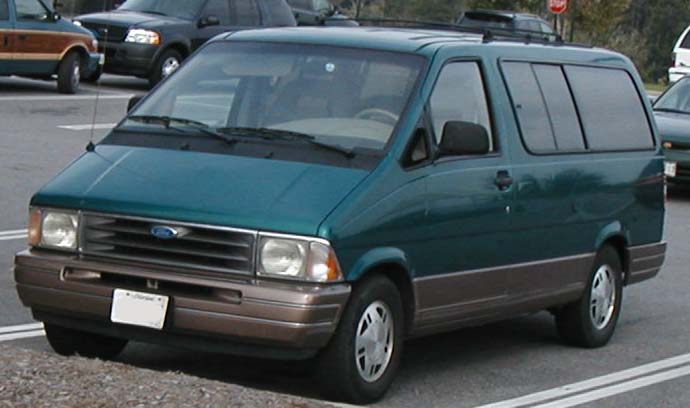The Aerostar was discontinued after the 1997 model year after being replaced by the Windstar in the 1995 model year; both product lines were sold from 1995-1997. The role of the Aerostar cargo van was left unfilled until the 2010 introduction of the Transit Connect.
Ford Aerostar Gallery





The Ford Aerostar was Ford's first minivan and was introduced as a 1986 model in summer 1985. The Aerostar is sometimes referred to as a "midivan", or "sportvan" along with the RWD GM vans, due to its being larger than Chrysler's minivans but smaller than a traditional full-size van. The aerodynamic sloped-nosed styling resembled the Ford Taurus introduced alongside it for 1986. An early commercial ad campaign compared the side profile of the Aerostar to that of the NASA Space Shuttle. For much of its later life, the Aerostar would be marketed as part of Ford's light-truck lineup.
The Aerostar differed from other minivans of its time because it was built on a dedicated platform of its own. The official platform designation for the Aerostar is VN1, which was also the first American Ford to use an alphanumeric platform designation (as opposed to "Fox" or "Panther") This design was developed because the designers in Ford's truck office were unfamiliar and uncomfortable with unibody construction.[citation needed] As a result, the frame rails were integrated into the unibody (this construction was also used on the Chevrolet Astro/GMC Safari vans, the second-generation Jeep Cherokee, and today's Honda Ridgeline pickup). Unlike the front-wheel drive Chrysler minivans and their later clones, the Aerostar was designed as a rear-wheel drive vehicle. This compromised interior space somewhat (the interior floor was higher) but rear-wheel drive provided superior towing ability as well as increased traction when loaded.
Although the Aerostar used its own platform, it was designed with a high degree of parts commonality with other Ford light-truck products of the time (initially, the Ford Ranger/Bronco II and the later Ford Explorer/Mazda Navajo). Components such as the brake rotors, axle bearings, wheels were all interchangeable and essentially any light-truck upgrades for power and suspension were also available to the Aerostar.[citation needed] One notable exception is that the Aerostar's rear suspension was designed with a 3-link coil spring rear suspension with a live rear axle. This rear suspension design was similar to that used by the Ford LTD Crown Victoria and Fox-body Mustang.
The exterior and interior of the Aerostar featured several notable design quirks. The Aerostar was one of the few American minivans ever to feature a handbrake in between the front seats; this was a feature retained by both of its successors. Another quirk in early Aerostars is that it could be ordered with up to six ashtrays and two cigar lighters; the interior may have been designed with a smoker in mind. Unlike other American minivans of the time, the 2nd-row windows on the Aerostar slid open, in a way similar to the VW Vanagon. Like Chrysler's minivans, the Aerostar was exported to Europe in small numbers, which is why the rear license surround is sized to accommodate European number plates in addition to American ones.












No comments:
Post a Comment